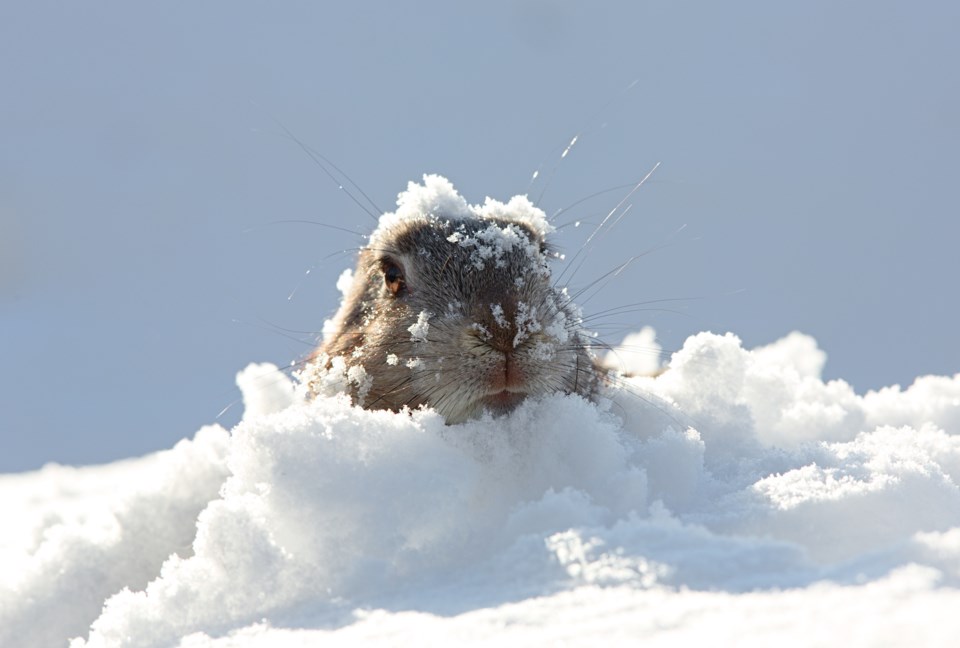If you hope Wiarton Willie doesn’t see his shadow this morning, a Lakehead University professor has some bad news for you.
Michael Rennie and his students studied the accuracy of Groundhog Day predictions and determined that flipping a coin does as good a job as predicting the arrival of spring as those furry rodents.
“If you think about it, we celebrate Groundhog Day a full month before these animals typically emerge from hibernation, so this practice is completely disassociated from any meaningful biological response that groundhogs might otherwise have for detecting spring conditions” he said.
Rennie leads the Community Ecology and Energetics lab at Lakehead University that published the study in “Weather, Climate and Society” a few years ago.
He and his graduate students gathered all the data they could find from North American groundhogs, spanning 33 locations and over 530 groundhog ‘observations.’
The research team examined Groundhog Day predictions from as far south as General Beauregard Lee in Georgia to Winnipeg Willow in Manitoba – spanning more than 15 degrees latitude and going back several decades, with one set of predictions from as far back as a century ago.
This became a lab project that they worked on and off over several years, resulting in the published research.
“More than anything, this was also a good exercise – especially for the more junior students to appreciate how a collaborative research project works and the trials and tribulations of publication,” said Rennie, who is also the acting chair of biology at Lakehead and an associate professor, in a news release.
The researchers found that, across all groundhogs, the onset of spring was predicted correctly exactly 50 per cent of the time – the same outcome you would expect from flipping a coin.
As the legend goes, if the groundhog sees its shadow it will return to its burrow and spring will arrive late. If it does not see its shadow, everyone rejoices at the prospect of an early spring.
The researchers faced some challenges when examining Groundhog Day predictions. Because spring comes at different times for each of these groundhogs, the group needed to determine objectively if spring arrived early or late at each location in any given year.
For this determination, they turned to a spring blooming flower, the Carolina Spring Beauty, distributed equally to all areas where groundhogs made their predictions.
In another recent publication, work from Rennie’s lab determined that this flower would bloom predictably after accumulating a certain amount of thermal energy, known as “degree days.”
The researchers then used data from weather stations near each groundhog’s location to estimate this bloom date – and thus the arrival of spring in that location each year.
Then it was simply a matter of determining how well each groundhog’s prediction of ‘early’ or ‘late’ matched with the actual arrival of spring.
Some groundhogs could be given a passing grade for their predictive prowess – with Essex Ed (Essex, Connecticut), Stonewall Jackson (Wantage, New Jersey), and Chuckles (Manchester, Connecticut) predicting spring's onset more than 70 per cent of the time, but no single groundhog made predictions with any level of accuracy worth relying on.
“We did, however, have a friendly bet going as to whether the Canadian groundhogs did any better than American ones. They did not,” Rennie said, adding that it appears one of the groundhogs may believe in climate change.
“Probably the most surprising result was that one of the longest prognosticating groundhogs, Punxsutawney Phil, seems to be a proponent of climate change,” Rennie said.
“In the later part of his over 100-year dataset of predictions, Phil tends to have a statistically significant propensity to predict early springs in the most recent years. Maybe he’s trying to get through to the folks who don’t seem to want to listen to climate scientists.”
So if groundhogs are not good at predicting spring, why all the hoopla from cities and towns in Canada and the U.S.?
“We do all sorts of things as a society that bring people together to celebrate,” Rennie said.
“Groundhog Day probably makes as much sense as many religious celebrations. It’s pretty clear the association with actually predicting the onset of spring is not a thing, based on our paper, but as a reason to get together and collectively anticipate the oncoming of better weather, Groundhog Day probably isn’t such a bad thing.”
